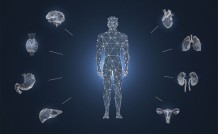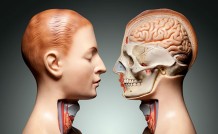Online Class: Asthma 101

no certificate
with CEU Certificate*
-
11Lessons
-
13Exams &
Assignments -
937Students
have taken this course -
4Hours
average time -
0.4CEUs
Course Description
Welcome to Asthma 101, an introduction into the medical condition known as asthma. Do you know the difference between asthma and allergies? We'll explain that in this course. Students will also learn about the usual suspects when it comes to asthma symptoms and the different types of asthma that an individual can be diagnosed with, depending on occupation, lifestyle and hypersensitivity to foods, drugs, and the environment.
In this course, students will also learn how to identify risk factors for contracting asthma as well as a understand the background into genetic information that may be associated with the condition. Managing asthma is also a focus of this course, and students will learn how to provide and contribute to long-term therapy and approaches to asthma treatment following a diagnosis.
In this course, we'll cover a number of commonly prescribed medications and alternative treatments for relief of asthma symptoms. Both prescription and over-the-counter medications used to treat asthma are also covered in this course, as is the use of a variety of diagnostic methodologies to develop a well-rounded and effective short-acting and long-term treatment plan for management of asthma symptoms.
You'll learn about some of the more common complications that those diagnosed with asthma need to watch out for as well as steps that you can take to create a cleaner, safer and healthier home environment.
Students will also learn how asthma affects children, pregnant women and the elderly in different ways and steps that each group can take in their fight against asthmas by discussing medications, lifestyle changes, and knowledge that helps reduce the frequency and severity of asthma attacks in a variety of environments.
Course Motivation
Understanding asthma, what it is, and how it affects the body is the foundation of this course. The first thing to know is that people of all ages, socioeconomic, and geographical backgrounds are diagnosed with asthma every day. Some medical experts believe asthma is directly linked to indoor air pollution, exposure to chemicals, and unhealthy lifestyles. More people in developed countries around the world suffer from asthma than others.
What Is Asthma?
Asthma is a condition that affects the airways. The airway (trachea) is the tube that extends from the back of your throat down the neck and then branches off into two passageways that access the lungs. Individuals diagnosed with asthma, or experiencing an asthma attack, produce a variety of symptoms, and individuals can react to these symptoms in different ways.
During an asthma attack, the airways swell, narrowing the amount of oxygen that enters or exits the lungs. This creates shortness of breath. This shortness of breath can be mild or severe, extremely brief or last for hours -- again depending on the individual and the trigger that precipitated the asthma attack.
According to the Heart Lung and Blood Institute, the National Institutes of Health, and the U.S. Department of Health and Human Services, nearly 22 million people in the United States have been diagnosed with asthma. Roughly 6 million are children.
Diagnosis, treatment, and prevention helps individuals learn to live with the condition and make changes in habits and lifestyles that increase comfort and quality of life. The ultimate goal in treating asthma is to create management and long-term therapy treatment plans that offer immediate relief, help prevent asthma from worsening, and facilitate quick response to an asthma attack.
Note - If you, or a loved one, or a friend experiences an asthma attack and lips or fingernails are turning blue, you (or they) are having trouble talking or walking, call 911 immediately. Don't wait for the attack to subside.
What's the Difference Between Asthma and Allergies?
While asthma directly affects the lungs and their function, as well as passageways that serve the lungs, allergies are described as a sensitivity disorder that more or less affect the sinuses, the eyes, and the throat. Allergies are defined as overreactions by the body to certain substances, such as dust, cat fur, or plant pollen.
Physicians and scientists believe there is a direct link between allergies and asthma, and individuals diagnosed with asthma are often also diagnosed with specific types of allergies.
Both allergic and asthma reactions are caused by a malfunction of your immune system. The immune system is your body's way of defending itself against attack from bacteria, injury, and invasions of substances the body considers dangerous. While dust may make a non-allergic or non-asthmatic person sneeze, to a person who is allergic to dust, or one who has asthma that is sensitive to it, may experience severe bodily reactions that cause extreme discomfort and difficulty breathing.
Asthma Anatomy
During an asthma attack, the body automatically tries to prevent substances that trigger the attack from entering the body. An asthma attack is also called asthma exacerbation. Basic knowledge of the respiratory system is important for individuals diagnosed with asthma and their loved ones, so they understand what happens during an asthma attack and how to provide care.
The respiratory system works like this:
Air then travels into the trachea, the major airway that extends from the throat to about the mid-chest. The trachea in turn branches off into the right and left bronchi, which extend into the right and left lung.
The bronchi, in turn, branch multiple times inside the lungs into bronchioles, which terminate in clusters of air sacs called alveoli. These tiny air sacs are where actual gas exchange (oxygen and carbon dioxide) occurs. When a person inhales, the ribs lift upward and outward. During exhalation, the ribs float downward and inward. During an asthma attack, you may notice a person taking longer to exhale than inhale, or you may even notice a type of panting or rapid breathing that fails to offer adequate oxygenation to the blood. In such cases, hyperventilation is possible.
Most of us breathe between 15 and 18 times a minute, exchanging roughly 500 ml of air during each breath. The force of the amount of air that you can exhale out of your lungs averages about four liters. This action is called vital capacity. Roughly 1200 mm of residual air remain in the lungs following a normal exhalation. During an asthma attack, the constriction of the bronchi and bronchioles make it extremely difficult for the lungs to facilitate the action of breathing in and breathing out.
The airways of an asthmatic are sensitive to inflammation, irritation, and swelling. During an attack, excessive mucous is produced, further blocking the airways, whose walls have become so thick that, between muscular constriction and airways narrowed due to inflammation, little air can enter or exit.
During an attack, the linings of the lungs and airways swell and increase their production of mucus as a response to a perceived assault or attack of the airways. Muscles around airways automatically tighten, making breathing difficult and painful. One of the most common symptoms of an asthma attack is the sound of wheezing or whistling as air struggles to move through these narrowed air passageways.
- Completely Online
- Self-Paced
- Printable Lessons
- Full HD Video

- 6 Months to Complete
- 24/7 Availability
- Start Anytime
- PC & Mac Compatible
- Android & iOS Friendly
- Accredited CEUs

Course Lessons
Lesson 1: Asthma Explained
 Lesson 1 Video
Lesson 1 Video Lesson discussions: Reasons for Taking this Course
Lesson discussions: Reasons for Taking this Course Complete Assignment: An Introduction
Complete Assignment: An Introduction Assessment: Lesson 1 Exam
Assessment: Lesson 1 Exam
Lesson 2: Asthma Symptoms
 Lesson 2 Video
Lesson 2 Video Assessment: Lesson 2 Exam
Assessment: Lesson 2 Exam
Lesson 3: Different Types of Asthma
 Lesson 3 Video
Lesson 3 Video Assessment: Lesson 3 Exam
Assessment: Lesson 3 Exam
Lesson 4: Asthma Triggers
 Lesson 4 Video
Lesson 4 Video Assessment: Lesson 4 Exam
Assessment: Lesson 4 Exam
Lesson 5: Why Me?
 Lesson 5 Video
Lesson 5 Video Assessment: Lesson 5 Exam
Assessment: Lesson 5 Exam
Lesson 6: Managing Asthma
 Lesson 6 Video
Lesson 6 Video Assessment: Lesson 6 Exam
Assessment: Lesson 6 Exam
Lesson 7: Long-term Therapy Asthma Management
 Lesson 7 Video
Lesson 7 Video Assessment: Lesson 7 Exam
Assessment: Lesson 7 Exam
Lesson 8: Alternative Asthma Treatment Approaches
 Lesson 8 Video
Lesson 8 Video Assessment: Lesson 8 Exam
Assessment: Lesson 8 Exam
Lesson 9: Asthma Complications
 Lesson 9 Video
Lesson 9 Video Assessment: Lesson 9 Exam
Assessment: Lesson 9 Exam
Lesson 10: Creating a Safe Home Environment
 Lesson 10 Video
Lesson 10 Video Assessment: Lesson 10 Exam
Assessment: Lesson 10 Exam
Lesson 11: Understanding Asthma in Children, Pregnancy, and the Elderly
 Lesson 11 Video
Lesson 11 Video Lesson discussions: Final Course Poll - Your Opinion; Program Evaluation Follow-up Survey (End of Course); Course Comments
Lesson discussions: Final Course Poll - Your Opinion; Program Evaluation Follow-up Survey (End of Course); Course Comments Assessment: Lesson 11 Exam
Assessment: Lesson 11 Exam Assessment: The Final Exam
Assessment: The Final Exam
Learning Outcomes
- Define what asthma is.
- Recognize asthma symptoms.
- Identify different types of asthma.
- Describe asthma triggers.
- Describe methods for managing asthma.
- Summarize long-term therapy asthma management.
- Describe alternative asthma treatment approaches.
- Describe asthma complications and how to create a safe home environment.
- Summarize the challenges of managing asthma in children, pregnancy, and the elderly.
- Demonstrate mastery of lesson content at levels of 70% or higher.
Additional Course Information

- Document Your Lifelong Learning Achievements
- Earn an Official Certificate Documenting Course Hours and CEUs
- Verify Your Certificate with a Unique Serial Number Online
- View and Share Your Certificate Online or Download/Print as PDF
- Display Your Certificate on Your Resume and Promote Your Achievements Using Social Media

Choose Your Subscription Plan
No Certificate / No CEUs
This course only
| Includes certificate | X |
| Includes CEUs | X |
| Self-paced |

|
| Instructor support |

|
| Time to complete | 6 months |
| No. of courses | 1 course |
Certificate & CEUs
This course only
| Includes certificate |

|
| Includes CEUs |

|
| Self-paced |

|
| Instructor support |

|
| Time to complete | 6 months |
| No. of courses | 1 course |
Certificates & CEUs
Includes all 600+ courses
| Includes certificate |

|
| Includes CEUs |

|
| Self-paced |

|
| Instructor support |

|
| Time to complete | 12 Months |
| No. of courses | 600+ |
Certificates & CEUs
Includes all 600+ courses
| Includes certificate |

|
| Includes CEUs |

|
| Self-paced |

|
| Instructor support |

|
| Time to complete | 24 Months |
| No. of courses | 600+ |
Student Testimonials
- "This course was very informative. I liked learning about my condition and how to work with it instead of against it. I also learned a lot of new things about medical resources and tools used to help asthma sufferers." -- Kristine P.
- "The instructor knew her stuff." -- Houston C.
Related Courses
-
 74 hours
7.4 CEUs
Medical Billing and Coding Course Bundle
+ More Info
74 hours
7.4 CEUs
Medical Billing and Coding Course Bundle
+ More Info
-
 10 hours
1.0 CEUs
Understanding Addictions
+ More Info
10 hours
1.0 CEUs
Understanding Addictions
+ More Info
-
 33 hours
3.3 CEUs
Comprehensive Medical Terminology 1 & 2
+ More Info
33 hours
3.3 CEUs
Comprehensive Medical Terminology 1 & 2
+ More Info
-
 21 hours
2.1 CEUs
Anatomy and Physiology 101
+ More Info
21 hours
2.1 CEUs
Anatomy and Physiology 101
+ More Info
-
 14 hours
1.4 CEUs
Weight Training 101
+ More Info
14 hours
1.4 CEUs
Weight Training 101
+ More Info
-
 8 hours
0.8 CEUs
Medical Office Administrative Operations
+ More Info
8 hours
0.8 CEUs
Medical Office Administrative Operations
+ More Info
-
 5 hours
0.5 CEUs
End of Life Care
+ More Info
5 hours
0.5 CEUs
End of Life Care
+ More Info
-
 18 hours
1.8 CEUs
Medical Terminology 101
+ More Info
18 hours
1.8 CEUs
Medical Terminology 101
+ More Info
-
 7 hours
0.7 CEUs
Understanding Drug and Alcohol Abuse
+ More Info
7 hours
0.7 CEUs
Understanding Drug and Alcohol Abuse
+ More Info
-
 10 hours
1.0 CEUs
Healthcare Code and Conduct
+ More Info
10 hours
1.0 CEUs
Healthcare Code and Conduct
+ More Info
-
 3 hours
0.3 CEUs
Understanding Childhood Obesity
+ More Info
3 hours
0.3 CEUs
Understanding Childhood Obesity
+ More Info
-
 4 hours
0.4 CEUs
Stress Management
+ More Info
4 hours
0.4 CEUs
Stress Management
+ More Info
-
 14 hours
1.4 CEUs
Medical Terminology for Medical Coders
+ More Info
14 hours
1.4 CEUs
Medical Terminology for Medical Coders
+ More Info
-
 7 hours
0.7 CEUs
Nutrition 101
+ More Info
7 hours
0.7 CEUs
Nutrition 101
+ More Info
-
 17 hours
1.7 CEUs
Medical Terminology 201
+ More Info
17 hours
1.7 CEUs
Medical Terminology 201
+ More Info
-
 6 hours
0.6 CEUs
HIPAA Compliance 101
+ More Info
6 hours
0.6 CEUs
HIPAA Compliance 101
+ More Info
-
 5 hours
0.5 CEUs
Depression Management
+ More Info
5 hours
0.5 CEUs
Depression Management
+ More Info
-
 9 hours
0.9 CEUs
Weight Loss Management
+ More Info
9 hours
0.9 CEUs
Weight Loss Management
+ More Info
-
 7 hours
0.7 CEUs
Understanding Concussions
+ More Info
7 hours
0.7 CEUs
Understanding Concussions
+ More Info
-
 17 hours
1.7 CEUs
ICD-10: Medical Coding
+ More Info
17 hours
1.7 CEUs
ICD-10: Medical Coding
+ More Info









